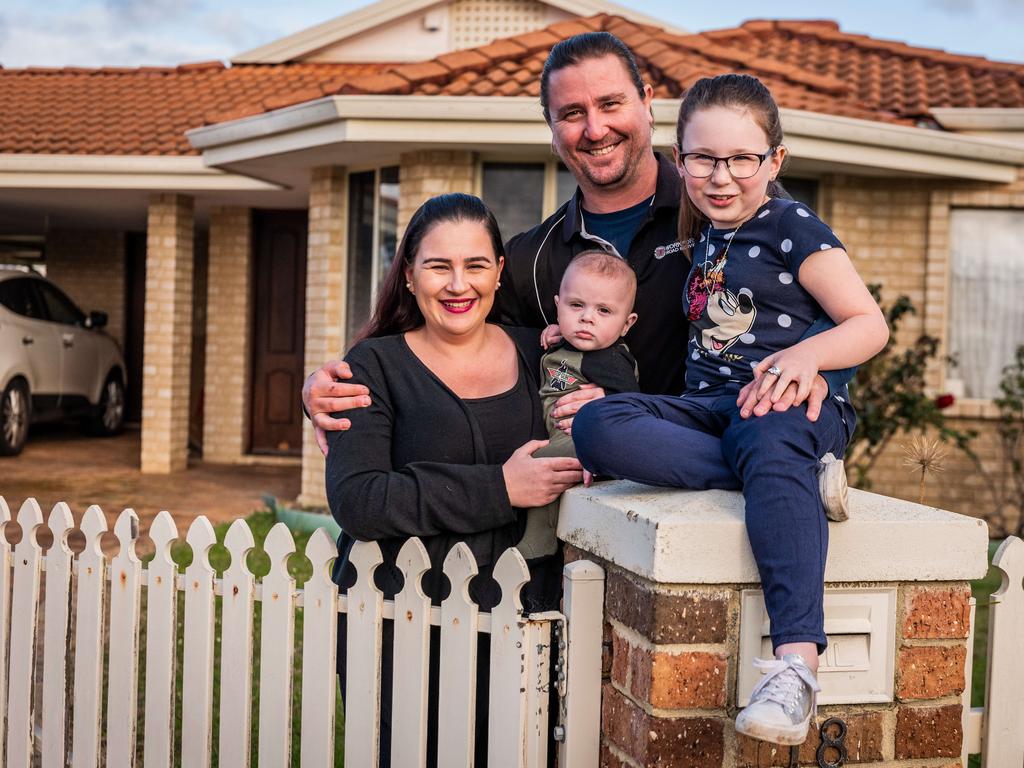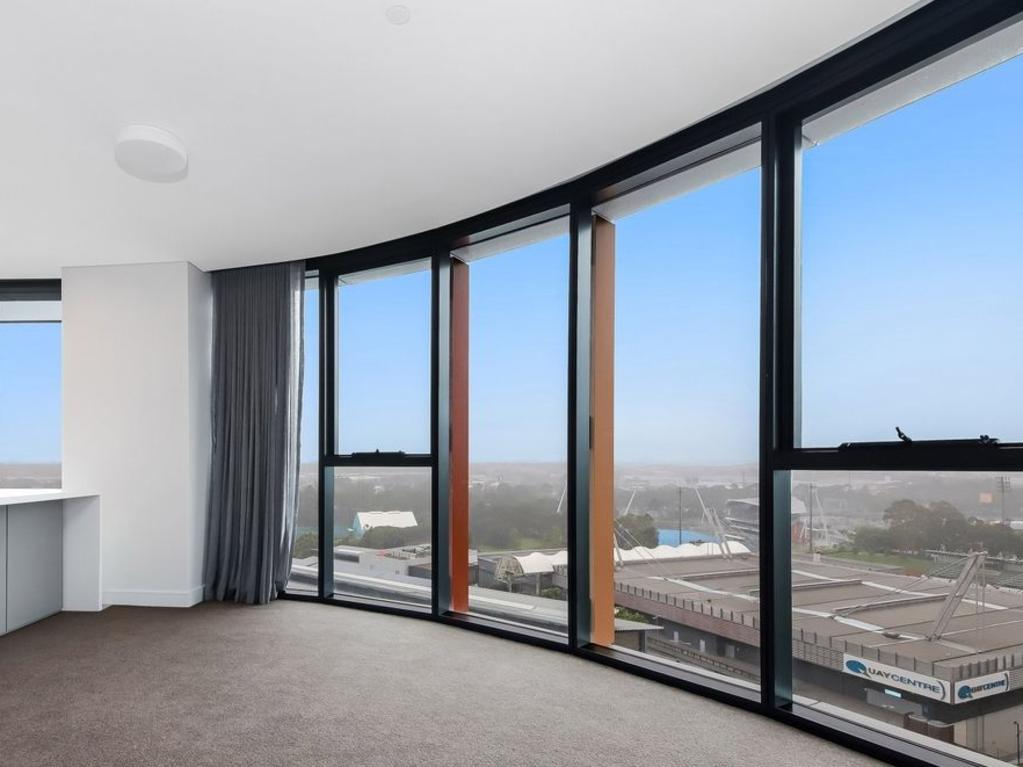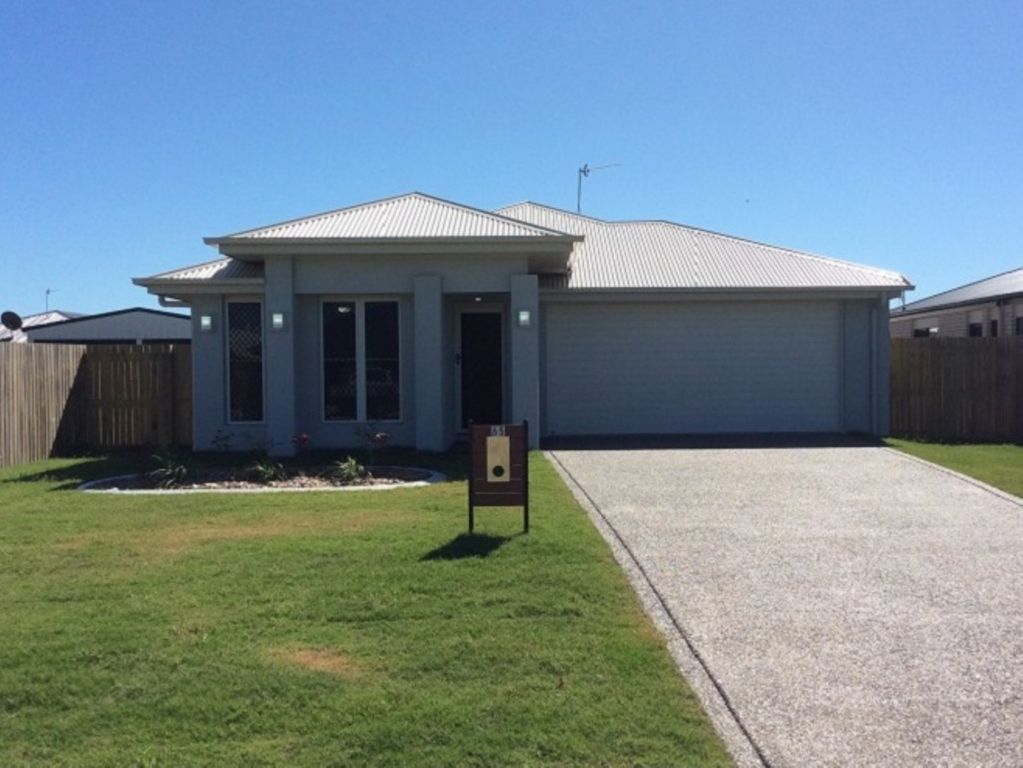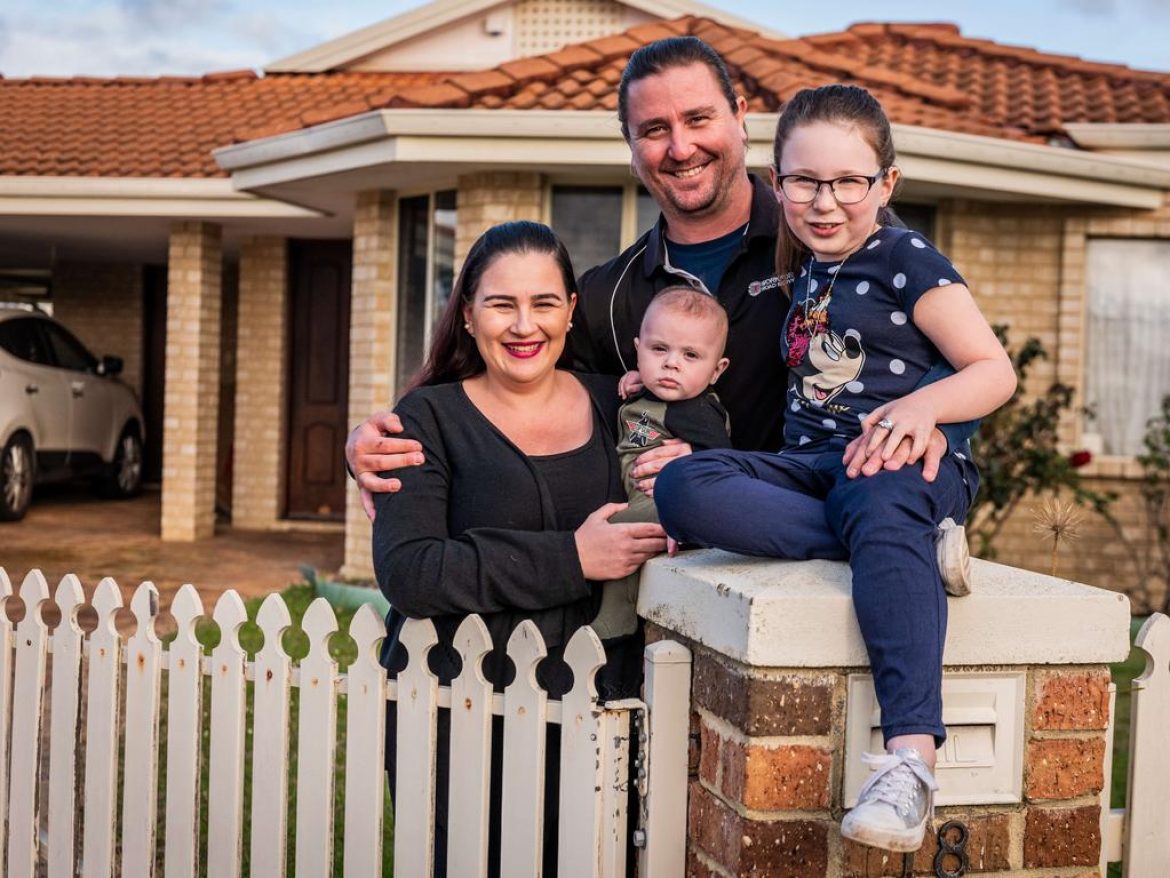
Ben and wife Elise Keeler with their children, Arabella and Luka at their rental property in Helena Valley near Perth. Picture: Tony McDonough.
Residential rents have slumped to new lows during the COVID-19 pandemic – and while that’s good news for tenants, the downturn also comes with a significant silver lining for investors.
According to consumer price index (CPI) data released Wednesday, over the June quarter national rents fell by -1.3 per cent. This is the greatest and first quarterly decline on record.
Rental yields have also slipped to record lows.
RELATED: City where tenants offered free rent, bills and Netflix
However rental searches on realestate.com.au are up 39 per cent over the June quarter. Data from those searches reveals that tenants and prospective tenants are looking more often and looking for longer.
The volume of ‘high-intent’ search activity on the site is up an incredible 75 per cent over the same period.

It is a good time to be a renter, like Sydney’s James Rogers. Picture: Richard Dobson
“The results are a clear indicator of how COVID-19 has changed the property market dynamic,” REA Group Director of Economic Research, Cameron Kusher said.
“Rental rates are coming under pressure from multiple sources. We have virtually no migration, there is new stimulus encouraging purchasing from first home buyers who otherwise may have been renters, and then there’s the fact that unemployment is rising, and younger people are most affected.
MORE:
Rare chance to own exclusive Sydney home from The Block
Unique property search from Hong Kong buyers
“With a moratorium on rental evictions in place until September, the next quarter is unlikely to see rental CPI fall as severely. Thereafter it is likely rental rates will fall further and will take quite some time to recover to previous highs.
“The high demand on realestate.com.au is likely due to the possibility of finding cheaper and or better rentals, as evidenced by the CPI data.”

Properties such as this high-rise apartment in Sydney’s west are being advertised with free rent.
Shona Armstrong-Smith, Director and Property Manager at Century 21 Armstrong-Smith said she has witnessed those unusual concurrent factors of falling rent and rising search activity on the ground.
“While we agree that the rent prices are falling we have still been very busy leasing properties,” she said.
“There are a lot of properties available. The rents are lower than they were due to the number of properties available and the fact that many people have lost income during this time and so they cannot afford to pay the rents they were paying previously.
“It is not a market that landlords or agents are used to but we are still managing to lease a lot of properties by listening to the market which is positive.”

Nicholas Armstrong-Smith (L), Shona Armstrong-Smith and Century 21 Australasia chairman Charles Tarbey.
How rents are costing less
According to a report from property data provider CoreLogic: “Annualised growth in national rent values was just 1.1 per cent in the five years to June 2020, compared with annualised growth in the selected living cost index of 1.4 per cent in the five years to March for employee households. In other words, rents have generally seen softer growth than the growth in general cost of living for most households.”
Therefore the rise in rent has, more recently, has failed to keep pace with other living costs and the CPI, which is a good result for tenants, especially when you take into consideration sluggish wage growth.
Positives for landlords
Research from CoreLogic has revealed that almost 88 per cent of the 72,500 homes resold in the March quarter did so for a profit. That was down by 1 per cent on the December quarter – a good indication of how the market is holding up under the pressure of COVID-19 and far from the price crash of 30 per cent predicted by some.
Therefore, in most cases the value of units and homes owned by investors and landlords haven’t slumped due to the pandemic.
MORE:
How COVID-19 has changed what we want in our homes
‘Mini’ budget provides big hopes for real estate

Home values are remaining stable, despite COVID-19 in a good sign for landlords.
And despite the lack of rental growth over the last five years, the average annual rise in dwelling values over the same period has been 2.9 per cent (3 per cent in the combined capitals) during a period of strong market downturn. Over the last 12 months values have jumped nationally by 8.3 per cent, 9.7 per cent in the combined capitals, according to Core Logic.
Over the same period rent values grew just 0.7 per cent.
All this data points to the fact that if you do own property, it has significantly grown in value over the past five years and indeed over the past 12 months.
Another factor on the plus side for investors is that record low mortgage rates are set to stay this way for years to come.

You might be able to afford that place with a pool now.
New mortgage rates hit a record low of 3.15 per cent in May, according to the RBA.
However, rent yields crashed to a record low of 3.4 per cent in the June quarter in Sydney, while in Hobart they slumped to a record low of 4.8 per cent.
The unusual conditions, are highlighted by the highest rental yield in the June quarter being in Darwin with 6.8 per cent. However annualised capital growth in the Northern Territory capital was -9.8 per cent over the last five years.
MORE:
Is ‘armchair investing’ for you?
How Melbourne lockdown 2.0 will affect Aussie real estate
Units have been hit hardest nationally, rents on those dwellings fell 1.4 per cent in the last quarter. However unit values declined just 0.3 per cent in the COVID-19 hit economy.
From coast to coast, unit yields have sunk to 4 per cent. This is the lowest yield on record for Australian units, according to CoreLogic.
The post Australian rents have experienced their biggest quarterly drop ever appeared first on realestate.com.au.

